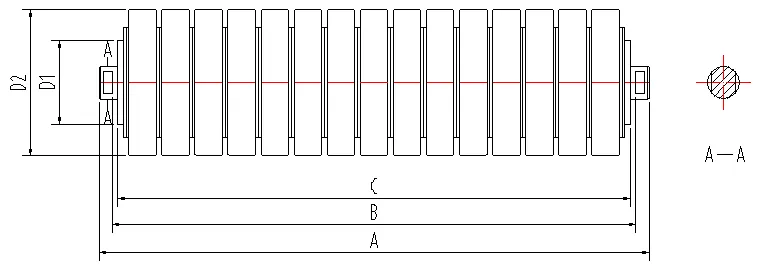 Afrikaans
Afrikaans  Albanian
Albanian  Amharic
Amharic  Arabic
Arabic  Armenian
Armenian  Azerbaijani
Azerbaijani  Basque
Basque  Belarusian
Belarusian  Bengali
Bengali  Bosnian
Bosnian  Bulgarian
Bulgarian  Catalan
Catalan  Cebuano
Cebuano  Corsican
Corsican  Croatian
Croatian  Czech
Czech  Danish
Danish  Dutch
Dutch  English
English  Esperanto
Esperanto  Estonian
Estonian  Finnish
Finnish  French
French  Frisian
Frisian  Galician
Galician  Georgian
Georgian  German
German  Greek
Greek  Gujarati
Gujarati  Haitian Creole
Haitian Creole  hausa
hausa  hawaiian
hawaiian  Hebrew
Hebrew  Hindi
Hindi  Miao
Miao  Hungarian
Hungarian  Icelandic
Icelandic  igbo
igbo  Indonesian
Indonesian  irish
irish  Italian
Italian  Japanese
Japanese  Javanese
Javanese  Kannada
Kannada  kazakh
kazakh  Khmer
Khmer  Rwandese
Rwandese  Korean
Korean  Kurdish
Kurdish  Kyrgyz
Kyrgyz  Lao
Lao  Latin
Latin  Latvian
Latvian  Lithuanian
Lithuanian  Luxembourgish
Luxembourgish  Macedonian
Macedonian  Malgashi
Malgashi  Malay
Malay  Malayalam
Malayalam  Maltese
Maltese  Maori
Maori  Marathi
Marathi  Mongolian
Mongolian  Myanmar
Myanmar  Nepali
Nepali  Norwegian
Norwegian  Norwegian
Norwegian  Occitan
Occitan  Pashto
Pashto  Persian
Persian  Polish
Polish  Portuguese
Portuguese  Punjabi
Punjabi  Romanian
Romanian  Russian
Russian  Samoan
Samoan  Scottish Gaelic
Scottish Gaelic  Serbian
Serbian  Sesotho
Sesotho  Shona
Shona  Sindhi
Sindhi  Sinhala
Sinhala  Slovak
Slovak  Slovenian
Slovenian  Somali
Somali  Spanish
Spanish  Sundanese
Sundanese  Swahili
Swahili  Swedish
Swedish  Tagalog
Tagalog  Tajik
Tajik  Tamil
Tamil  Tatar
Tatar  Telugu
Telugu  Thai
Thai  Turkish
Turkish  Turkmen
Turkmen  Ukrainian
Ukrainian  Urdu
Urdu  Uighur
Uighur  Uzbek
Uzbek  Vietnamese
Vietnamese  Welsh
Welsh  Bantu
Bantu  Yiddish
Yiddish  Yoruba
Yoruba  Zulu
Zulu Different Varieties of Conveyor Idlers for Optimal Material Handling Solutions
Types of Conveyor Idlers Essential Components for Material Handling
Conveyor systems are vital in industries ranging from manufacturing to logistics, facilitating the efficient movement of goods and materials. One of the key components that ensure the smooth operation of these systems is the conveyor idler. Idlers are the rollers that support the conveyor belt and help maintain its alignment and tension. Understanding the various types of conveyor idlers is essential for selecting the right components that enhance the conveyor system's performance.
1. Standard Idlers
Standard idlers are the most commonly used type in conveyor systems. They consist of a roller mounted on a frame that supports the weight of the conveyor belt and the material it carries. Standard idlers are generally designed in two configurations trough and flat. Trough idlers have a V-shaped arrangement that helps hold the load more securely, while flat idlers provide a stable support for lighter loads.
2. Impact Idlers
In applications where heavy materials are transported, impact idlers are crucial. Located at the loading area of the conveyor, impact idlers are designed to absorb the shock of falling materials, reducing wear and tear on the conveyor belt and other components. These idlers typically have a larger diameter and a robust construction to withstand the stresses associated with heavy impacts.
Return idlers play a significant role in supporting the conveyor belt as it returns from the discharge point to the loading point. They are usually located underneath the conveyor system, helping to maintain belt tension and alignment. Return idlers can be flat or have a slight trough to minimize belt wear and ensure smooth operation.
types of conveyor idlers

4. Training Idlers
Training idlers are used to ensure that the conveyor belt remains in the correct position during operation. These idlers are mounted at strategic points along the conveyor and are often adjustable. They help to prevent the belt from drifting off its desired path, which can lead to misalignment, increased wear, and even system failure if not managed properly.
5. Specialized Idlers
Depending on specific needs, there are various specialized idlers designed for particular applications. For example, self-aligning idlers feature a unique design that automatically adjusts the position of the conveyor belt, reducing the maintenance required to manage alignment issues. Furthermore, there are dust-control idlers designed with covers to minimize dust emissions during operation, an essential feature in industries handling fine materials.
6. Roller Types
The material and design of the idler roller also vary. Common materials include steel, rubber, and plastic. Steel rollers are durable and recommended for heavy-duty applications, while rubber rollers can provide noise reduction. Plastic rollers, often found in lighter applications, are resistant to corrosion and offer a lightweight alternative.
Conclusion
Selecting the right type of conveyor idler is critical for optimal conveyor operation. The choice depends on various factors, including the type of material being transported, the environment in which the conveyor operates, and the mechanical stress anticipated during operation. Understanding the different types of idlers, such as standard, impact, return, training, and specialized idlers, helps in designing a conveyor system that maximizes efficiency, reduces maintenance costs, and prolongs equipment lifespan. By carefully considering these components, industries can enhance their material handling processes, ultimately improving productivity and profitability.
-
Revolutionizing Conveyor Reliability with Advanced Rubber Lagging PulleysNewsJul.22,2025
-
Powering Precision and Durability with Expert Manufacturers of Conveyor ComponentsNewsJul.22,2025
-
Optimizing Conveyor Systems with Advanced Conveyor AccessoriesNewsJul.22,2025
-
Maximize Conveyor Efficiency with Quality Conveyor Idler PulleysNewsJul.22,2025
-
Future-Proof Your Conveyor System with High-Performance Polyurethane RollerNewsJul.22,2025
-
Driving Efficiency Forward with Quality Idlers and RollersNewsJul.22,2025





























